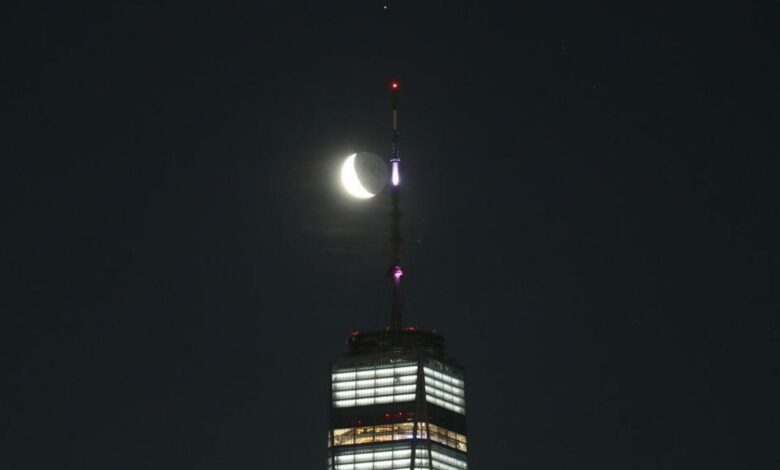How to See Mars and Jupiter in Conjunction in the Sky This Week

This week we’ve already had an aurora borealis and the Perseid meteor shower. Wednesday morning is your next chance to see a spectacular celestial event. Mars and Jupiter will be in conjunctionwhich means ‘on top of each other’, making them fairly easy to view, even without a telescope.
The two planets are separated by a third of a degree, which NASA says is “less than the width of the full moon.” More precisely, the planets are about 350 million miles (560 million kilometers) apart, but their orbits are aligned in such a way that it looks as if Mars is about to collide with Jupiter.
Read more: Aurora Borealis will once again be visible in the northernmost states of the US
The two planets are right next to each other and it can be tricky to tell them apart at first. Mars, however, will appear to float in front of and to the left of Jupiter. Jupiter is the brighter of the two planets, so you’ll probably spot it first and then have to look for Mars.
The two planets, hanging so close together in what astronomers call a conjunction, will be visible in the night sky from all over the United States, in the eastern or northeastern sky, depending on your location and what time you look. The two planets should rise in the night sky between 1:30 and 2:30 a.m. for most people and will be in the constellations Taurus and Auriga. Stargazers may be familiar with Auriga as the host constellation for the Alpha Aurigids meteor shower that peaks later this month.
When is the best time to see Mars and Jupiter?
The two planets should be rising above the horizon just after midnight in most parts of the U.S. They will continue to rise in the sky until sunrise, when they will be drowned out by the light from the sun. According to NASA, the best time to view the two planets is a few hours before sunrise, when they will be nice and high in the sky. Of course, weather is a factor, and they will be harder to see in a larger city with too much light pollution.
Tuesday night into Wednesday morning is the night when the two planets are closest together. After Wednesday morning, Mars will start to move away from Jupiter, but it will take a while for that to happen. So you should be able to see the two planets fairly close together for a few days. Then they will gradually move further apart over the next few weeks.
Read more: This is your last chance to see the magnificent Perseid meteor shower
Do I need a telescope or binoculars?
No. The two planets will be clearly visible as long as there is not too much light pollution. However, because they are so close together, a telescope or binoculars can help you see them better. They will look like they are functionally on top of each other, so once you see one of the planets, you are technically seeing both, you just have to pick out Mars from the brighter Jupiter.
Read more: A unique cosmic nova explosion is coming: how to watch
How rare is a conjunction of Mars and Jupiter?
The two come together about once every few years. Mars and Jupiter are in conjunction 11 times since 2000 and are set to do so again in November 2026. However, it is much rarer to see them this close together, making the Wednesday morning viewing a special occasion for space fans. The next time they will be this close won’t be until 2033, when NASA says they will be even closer than they are this time.




